
When a new drug hits the market, it doesn’t just have a patent. It has patent exclusivity and market exclusivity - two different kinds of legal shields that keep generics away. People often think they’re the same thing. They’re not. And the difference can cost patients thousands of dollars - or save them.
Patent Exclusivity: The Legal Right to Block Copies
A patent is a government-granted monopoly on an invention. In pharmaceuticals, that usually means a new chemical compound, a unique way to make it, or a new use for an old drug. The U.S. Patent and Trademark Office (USPTO) gives this right. It lasts 20 years from the day the patent is filed - not from when the drug is approved.
Here’s the catch: drug development takes 10 to 15 years on average. By the time the FDA approves a new medicine, you’ve already used up half your patent life. That leaves only 5 to 10 years to make back the $2.3 billion it cost to develop the drug.
That’s why companies get extensions. Patent Term Extension (PTE) can add up to 5 extra years to make up for FDA review delays. But there’s a cap: the total time from drug approval to patent expiry can’t go beyond 14 years. So even with extensions, most drugs have 7 to 12 years of real market protection from patents alone.
Patents cover specific things: the molecule, how it’s made, how it’s packaged, or how it’s used. A company might file dozens of secondary patents - for a new tablet coating, a different dose, or a new patient group. These aren’t always strong, but they’re enough to delay generics. In fact, 68% of patents listed in the FDA’s Orange Book are secondary, not the original compound patent.
Market Exclusivity: The FDA’s Secret Weapon
Market exclusivity has nothing to do with patents. It’s granted by the FDA - and it doesn’t care if the drug is new or old. It only cares if the company submitted new clinical data to get approval.
This is where things get powerful. Even if a drug has no patent, the FDA can still block generics for years. How? By refusing to approve any application that copies the innovator’s clinical trial data.
There are different types:
- New Chemical Entity (NCE) exclusivity: 5 years. During this time, the FDA won’t even accept a generic application. After 5 years, generics can file - but they still can’t use the innovator’s data for 4 more years. So full protection lasts 9 years.
- Orphan drug exclusivity: 7 years, no matter what. If a drug treats fewer than 200,000 people in the U.S., the FDA locks out competitors for 7 years, even if the drug isn’t patented.
- Pediatric exclusivity: 6 months added to any existing patent or exclusivity. Companies get this by doing extra studies in kids. Since 1997, this has generated $15 billion in extra revenue for drugmakers.
- Biologics exclusivity: 12 years. This applies to complex drugs made from living cells - like Humira or Enbrel. Unlike small-molecule drugs, biosimilars can’t be approved until 12 years after the original.
- 180-day exclusivity: Given to the first generic company that successfully challenges a patent. This one’s a race. The winner gets a head start on the market - worth up to $500 million in extra sales.
Here’s the kicker: market exclusivity runs automatically. The FDA doesn’t ask. You don’t need to sue anyone. If you meet the rules, you get it. And if you miss the paperwork? You lose it. Between 2018 and 2022, 22% of drugmakers didn’t claim all the exclusivity they were owed - leaving an average of 1.3 years of protection on the table.
The Real-World Impact: When Patents Expire, But the Drug Still Isn’t Generic
Take colchicine. It’s been used since ancient Egypt to treat gout. No one patented it. But in 2010, Mutual Pharmaceutical got FDA approval for a new formulation. Because they submitted new clinical data, they got 10 years of market exclusivity. Overnight, the price jumped from 10 cents per tablet to nearly $5. No patent. Just exclusivity.
Or Trintellix, an antidepressant. Its main patent expired in 2021. But the FDA had granted 3 years of exclusivity for new clinical data. Teva was ready with a generic - but couldn’t launch until 2024. That delay cost them an estimated $320 million.
That’s why 78% of drugs with exclusivity but no patent still had no generic competition during the exclusivity period. Market exclusivity isn’t a backup. It’s often the main barrier to cheaper drugs.
How They Work Together - Or Don’t
Patents and market exclusivity can overlap. They can run one after the other. Or one can end while the other keeps going.
The FDA says 27.8% of branded drugs have both. But 38.4% have only patents. And 5.2% have only exclusivity - meaning no patent at all. That last group? They’re the ones that surprise people. A drug with no patent can still be protected for 5, 7, or even 12 years - just because the FDA says so.
This dual system was created by the Hatch-Waxman Act in 1984. The goal? Balance innovation and access. Give companies enough time to profit, but let generics in eventually.
But today, it’s skewed. Big pharma uses secondary patents to extend protection. And regulatory exclusivity gives them even more time - especially for drugs that aren’t even new.
Small biotech firms rely on exclusivity more than patents. In fact, 73% of them use it as their main shield. Why? Because developing a new biologic is so expensive, and patents are harder to get. Exclusivity is their lifeline.
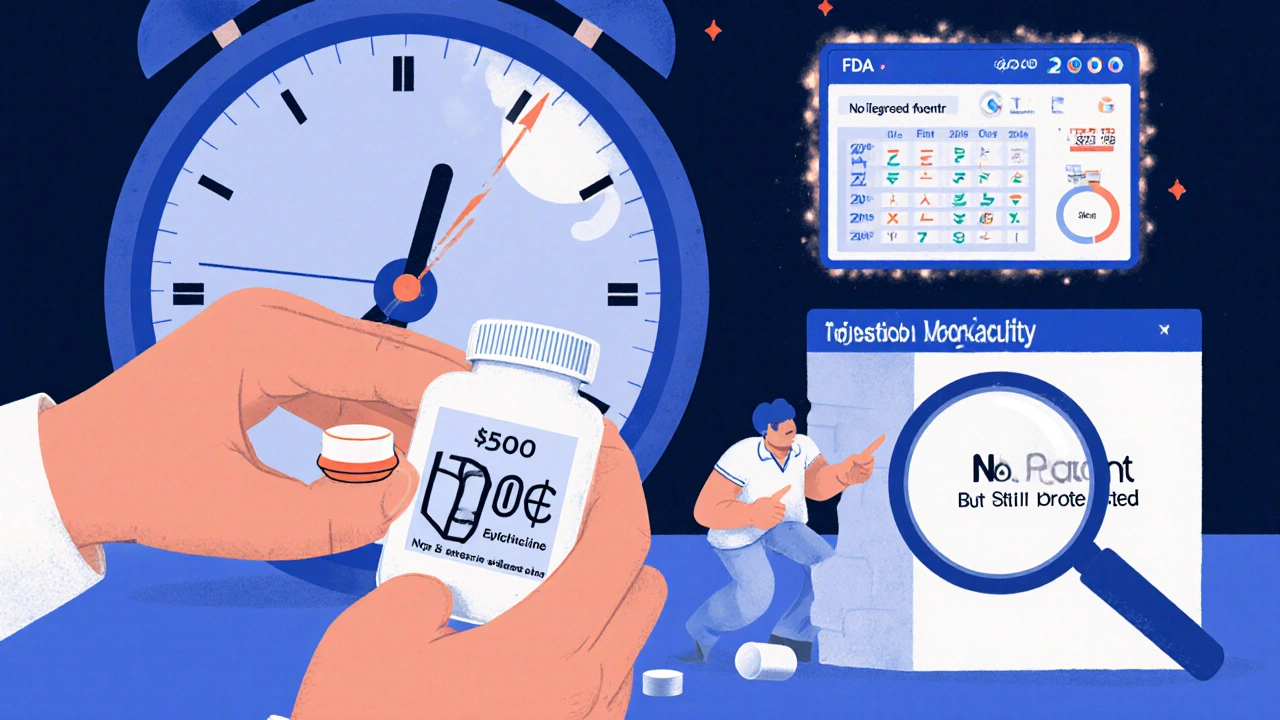
Who Benefits? Who Pays?
Branded drugmakers win. The average drug earns 65% of its total lifetime revenue in the first year after approval - thanks to these protections.
Patients and insurers lose. In 2022, branded drugs made up only 12% of prescriptions but 68% of total spending. That’s because generics are still locked out.
And the system is getting more complex. The FDA launched its Exclusivity Dashboard in September 2023 - a public tool that shows exactly when each drug’s protection ends. Generic companies are using it to plan their entries months in advance. Meanwhile, the PREVAIL Act of 2023 is pushing to cut biologics exclusivity from 12 to 10 years.
But here’s the truth: as patent challenges grow stronger, exclusivity is becoming the bigger player. By 2027, experts predict regulatory exclusivity will account for over half of all drug protection time - more than patents.
What This Means for You
If you’re a patient, this isn’t just legal jargon. It’s about whether your next prescription costs $10 or $500. If you’re a small company, it’s about whether your drug survives or gets buried under legal paperwork. If you’re a policymaker, it’s about whether the system is still fair.
Don’t assume a patent expiration means a generic is coming. Check the FDA’s Orange Book. Look for exclusivity dates. Ask your pharmacist. Because in today’s drug market, the real barrier to cheaper medicine isn’t always a patent - it’s a regulatory clock that no one talks about.
Can a drug have market exclusivity without a patent?
Yes. Market exclusivity is granted by the FDA based on new clinical data, not patents. For example, orphan drugs and reformulated versions of old medicines can get 7 or 5 years of exclusivity even if they’re not patented. Colchicine, a 2,000-year-old treatment, got 10 years of exclusivity without any patent protection.
How long does patent exclusivity last?
Patents last 20 years from the filing date, but because drug development takes 10-15 years, the actual market protection is often only 7-12 years. Extensions (PTE) can add up to 5 years, but the total protection after approval can’t exceed 14 years.
Does FDA exclusivity start when the drug is approved?
Yes. Market exclusivity begins on the day the FDA approves the drug - not when the patent was filed. It’s tied to approval, not invention. The clock doesn’t start until the drug is officially on the market.
Why do generic companies challenge patents?
Because the first generic to successfully challenge a listed patent gets 180 days of exclusive market rights - meaning no other generics can enter during that time. This period is worth hundreds of millions in revenue, making it worth the $8+ million legal cost to file a challenge.
Can a drug have both patent and market exclusivity at the same time?
Yes. In fact, about 28% of branded drugs have both. The patent protects the invention; the exclusivity blocks generic applications from using the innovator’s clinical data. They work independently - one can expire while the other remains active.
What’s the difference between data exclusivity and market exclusivity?
Data exclusivity prevents generic companies from relying on the innovator’s clinical trial data to get approval. Market exclusivity prevents the FDA from approving any competing product at all. In the U.S., NCE exclusivity combines both: 5 years of data protection and 5 years of market protection (with overlap).
How do I check if a drug has exclusivity?
Use the FDA’s Orange Book or Exclusivity Dashboard. Both list approved drugs, their patents, and their exclusivity periods. The Exclusivity Dashboard, launched in September 2023, shows real-time expiration dates for all types of exclusivity.
Why do some drugs cost more even after patents expire?
Because market exclusivity may still be active. If a drug has orphan, pediatric, or NCE exclusivity, generics can’t be approved - even if all patents are gone. This is why drugs like colchicine or Trintellix stayed expensive long after patent expiry.

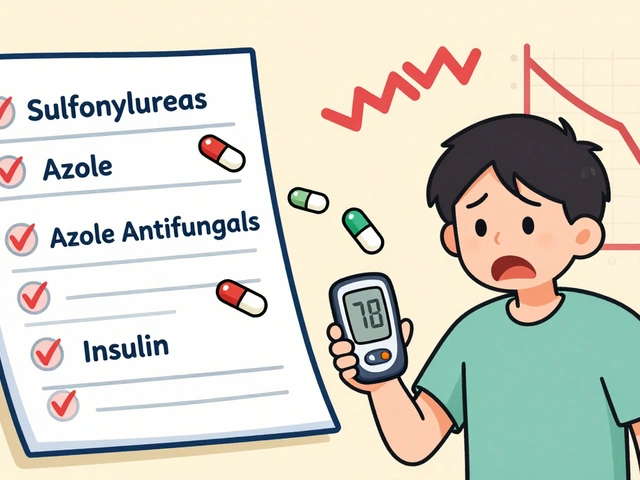

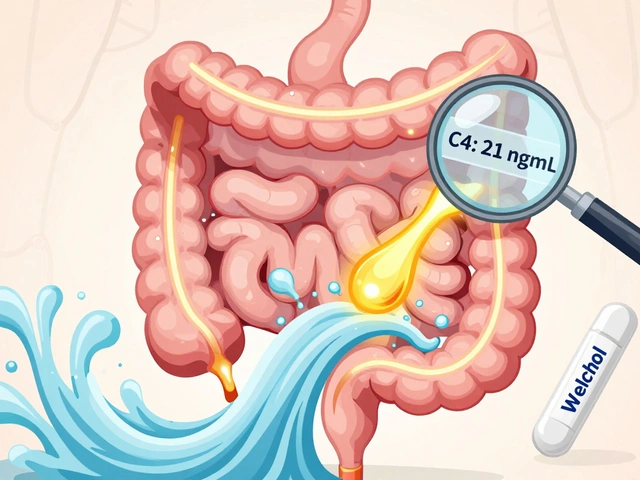
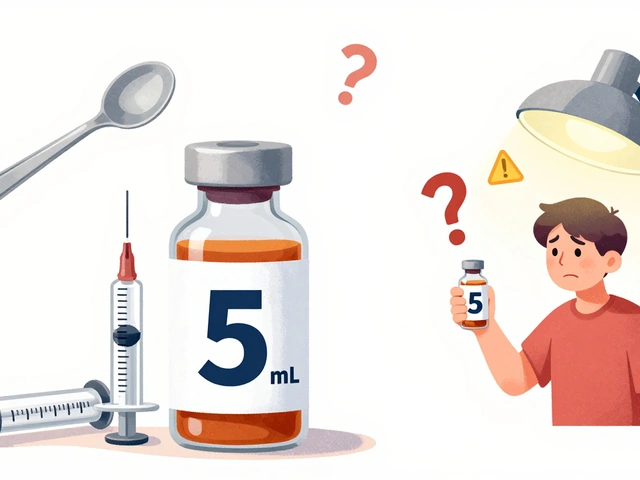
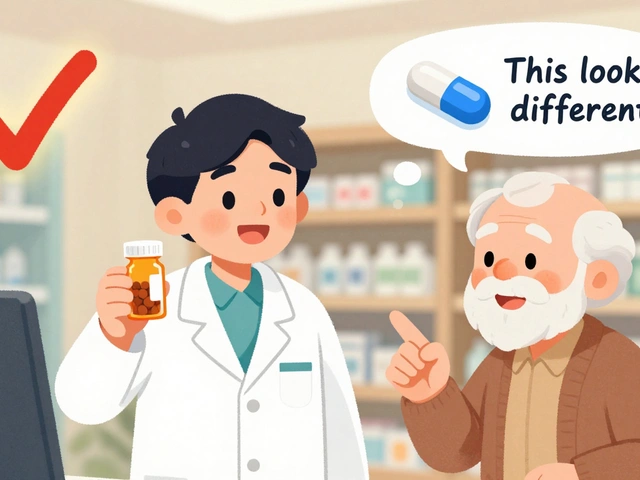
8 Comments
This post broke down something I’ve been confused about for years. I never realized market exclusivity could keep drugs expensive even after patents expired. Colchicine going from 10 cents to $5 because of FDA paperwork? That’s insane. No wonder people can’t afford their meds.
Wow. Another overlong, self-congratulatory rant about pharma profits. Did you really need 2000 words to say ‘big pharma is greedy’? Newsflash: capitalism exists. If you want cheap drugs, stop subsidizing clinical trials with taxpayer money and let the market decide.
You missed the real issue: 73% of small biotechs rely on exclusivity because they can’t afford patent litigation. This isn’t about greed - it’s survival. The system is rigged for Big Pharma, but the real villains are the investors who demand 20% returns on drugs that cure rare diseases. You think a startup with $5M in funding can fight a 10-year legal war? No. They need exclusivity to breathe. Stop blaming the innovators - blame the system that lets Pfizer buy up every patent troll in the country.
One cannot help but observe, with a certain degree of scholarly dismay, the increasing conflation of proprietary rights with public health imperatives. The Hatch-Waxman Act, while well-intentioned, has devolved into a regulatory labyrinth wherein economic incentives supplant therapeutic accessibility. One must question, then, whether the moral calculus of innovation justifies the exorbitant cost borne by the most vulnerable. The FDA’s Exclusivity Dashboard, though technologically laudable, remains an instrument of opacity rather than transparency - a digital veil, if you will, over systemic inequity.
Patents are for inventors. Exclusivity is for lawyers. The FDA is just the bouncer at the club. And we’re all stuck outside paying $500 for a pill that should cost $2.
It’s fascinating how we treat medicine like a commodity when it’s clearly a human right. We don’t patent clean water or oxygen. Why do we let a 2000-year-old compound like colchicine be locked away for a decade just because someone filed a form? We’re not protecting innovation - we’re protecting profit margins under the guise of science. And the worst part? We let it happen because we’re too distracted to care.
I’ve been working in clinical trials for 12 years, and this is the most accurate breakdown I’ve seen. The 180-day exclusivity for first generic challengers? That’s the real game-changer. I’ve seen companies spend $8M on legal fees just to get that window - and it’s not about fairness, it’s about timing. The FDA’s system is broken, but it’s not broken because of greed - it’s broken because the rules were written by lobbyists who never had to pay for insulin. We need reform, not outrage. And yes, check the Orange Book. Every. Single. Time.
so like… if a drug has no patent but gets exclusivity… then its just… a legal loophole? like… why do we even have patents then? this is wild. also who the heck wrote this? it’s like a textbook but on reddit. i love it.